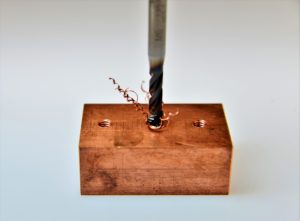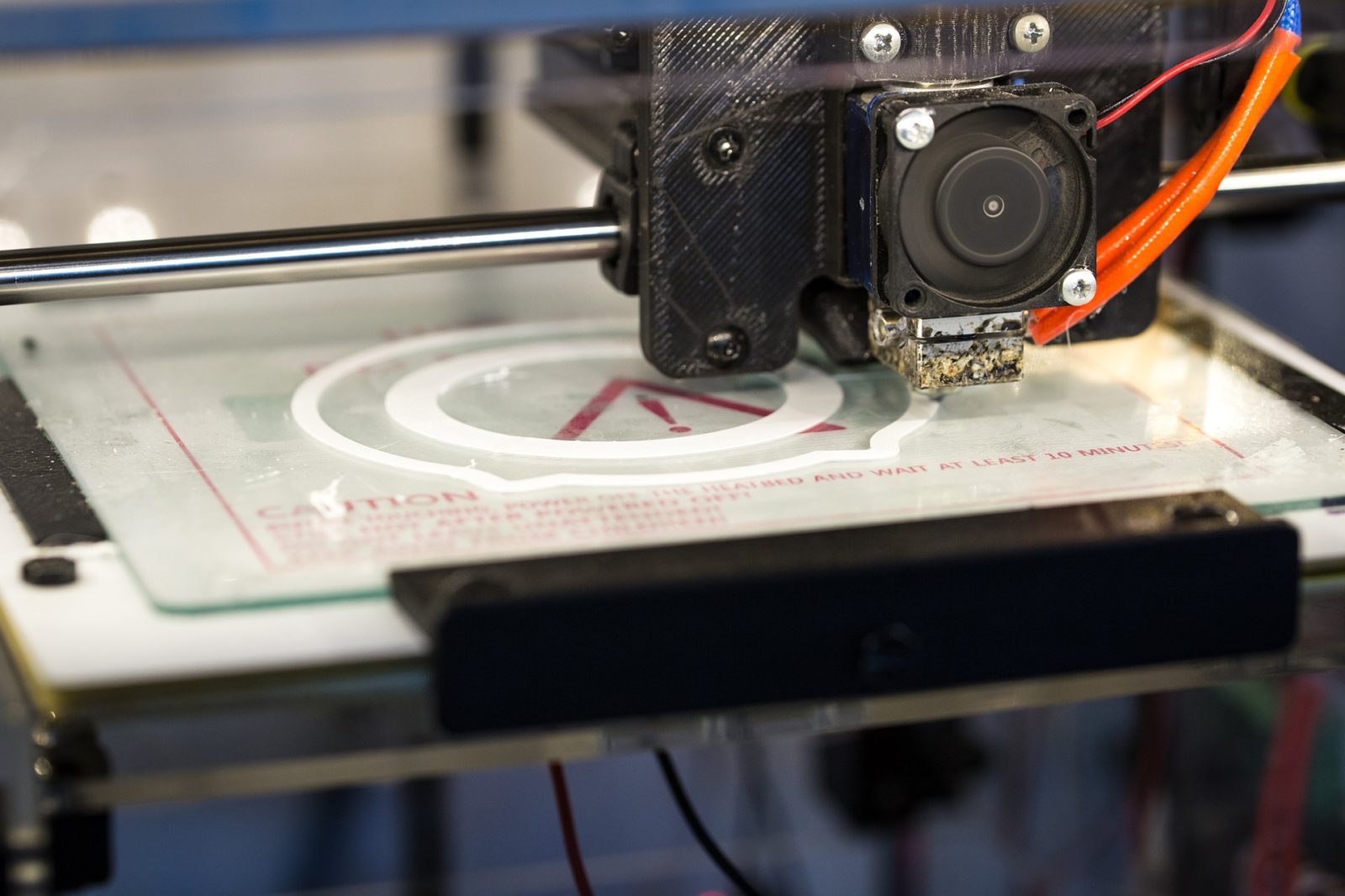The Significance of 3D Printing to Society
Traditionally, manufacturing has relied on “subtractive” techniques to produce parts and products. The most direct definition of subtractive manufacturing is to start with a blank of raw material, and cut away everything but the desired final shape. Forming is accomplished by removal. Taken more broadly, subtractive manufacturing may include the use of negative molds or dies to shape a raw material. In either case, manufacturing tools delineate where the finished product is not.

Subtractive manufacturing has completely dominated fabrication techniques since the industrial revolution, if not since mankind first developed tools. A tree may be cut down to toothpicks, or sheet metal stamped into toothpick-holders. But the crown jewel of subtractive manufacturing is undoubtedly computer numerical control (CNC) machine tooling. CNC systems digitize machining instructions and automate the execution of fabrication steps. CNC mills can convert raw metal billet into complex finished parts with a combination of accuracy, repeatability, and speed far exceeding the capabilities of human machinists.
Perhaps most importantly, computer-aided manufacturing (CAM) software can convert a digital model directly into a series of instructions for a general-purpose CNC machining robot. This process is often called digital manufacturing. This advancement transformed the manufacturing economics for small production runs of precision parts. Traditional non-automated manufacturing relies extensively on bespoke tooling which must, itself, be manufactured — a jig to hold a part being drilled, a cam template to trace out a complex curve, or a die for stamping out shapes. Such production tooling is only economical when the initial cost can be spread over a large number of finished products. It is also time-consuming to create and modify. In comparison, the CAM process allows the use of a single versatile machine to fulfill most of the functions of an entire factory line, albeit on fewer parts at a time. A single cluster of connected machines may be able to produce a wide variety of final parts, on demand, with minimal human labor. This dramatic reduction in single-unit manufacturing cost and complexity created the field of rapid prototyping — turning an idea into a functional physical thing in a matter of days.
Then, unlike with manual fabrication, ten more or a hundred more identical products can be fabricated with minimal extra effort. High-precision, low-volume parts (such as aircraft components or injection-mold tooling) are ideally suited to CNC manufacturing. This form of digital manufacturing has been a critical enabler for the modern high-tech economy.
While a key fabrication technology, subtractive CNC machines are predominantly industrial devices. Their accessibility to the public is limited. They must be heavy and strong to apply adequate cutting forces, produce prodigious quantities of noise, and are messy to operate due to cutting swarf and liquid lubricant/coolant flows. “Desktop” operation is nearly out of the question. Cost and inconvenience have mostly limited CNC mills and related machines to dedicated fabrication facilities and extending the capabilities of machinists. Exceptions do exist (such as on-site production of custom dental implants or jewelry casting molds) but these are high-cost, single-purpose specialist machines. Even a simple mill is a serious tool that requires a competent user. A CNC router for carving wood or aluminum in a garage is the most powerful mill a typical hobbyist will be able to manage.
A modern CNC mill is perhaps the pinnacle of subtractive manufacturing techniques — but its development was still an evolutionary step in conventional fabrication, not a revolutionary leap. But in the last three decades, CNC machine technology has been repurposed to serve in an important new role: “additive” manufacturing.
Unlike subtractive techniques that cut away excess material, additive techniques build up the desired part by adding material bit by bit. This is not merely assembling or attaching pieces, but entirely constructing a shape from formless raw feedstock. A computer-controlled sequence of material deposition creates the final product. The raw material is extruded, sprayed, glued, sintered, fused, or otherwise accreted in place according to programmed instructions. (The classic example is a hot-glue gun on a robot arm.) There are many, many ways to accomplish this material accretion, but the most widely-shared characteristic is that a liquid is placed in the desired position, which then rapidly hardens to form a solid layer. Many layers stack to form the desired shape.

This collection of processes is frequently called “3D Printing.” That name has captured the public’s imagination and spurred declarations of the dawn of the “third (or fourth) industrial revolution.” This is a bit hyperbolic, but not by much. It is hard to overstate the potential importance of additive manufacturing technology. It promises to herald the democratization of manufacturing.
The concept and technology of 3D printing is actually several decades old now, but until recently it was relegated to large, expensive industrial machines. This added a significant tool to the conventional fabrication toolbox, but did not achieve large-scale economic significance. The catalyst for the sector’s explosive growth was the expiration of key early patents around 2009-2010 and subsequent development of cheap, open-source reference designs based on affordable (or printable) components. The RepRap movement in particular deserves credit for developing and sharing open-source designs focused on “self-replication” of hardware and evolution of designs.
Today, anyone with basic electrical and mechanical skills can buy or build a decent 3D printer for a few hundred dollars. It can sit on a desk and operate in a residential or commercial space with minimal footprint and mess. Then, that machine can produce components to upgrade itself and to make more 3D printers. Designs for machine upgrades and new mechanism concepts are easily shared over the internet as “ready to print” digital files, aiding rapid adoption.
The low bar to entry is making additive manufacturing exceptionally appealing to hobbyists, schools, and other users that would not pursue subtractive CNC manufacturing. This explosion of growth is wildly expanding the subset of the population with access to highly-capable fabrication technology.
Why is 3D printing so significant? Because it brings automated manufacturing to the household level. Depositing & solidifying material is simply a more user-friendly and cost-effective process than cutting away excess. Commentators make much of the “additive” quality as saving materials or allowing designs not possible with subtractive techniques, but affordability and simplicity are arguably more important. Reducing the size, cost, and mess of computerized fabrication equipment has turned out to be a transformational step. “Making stuff” is getting much, much easier. Placing user-friendly automated fabrication technology in office buildings and classrooms has the potential to seed an entirely new sort of “mass-maker” culture.
Part II explores the potential impact of 3D printing on society, and how the 3D Printer Engineering book series will accelerate that journey.
